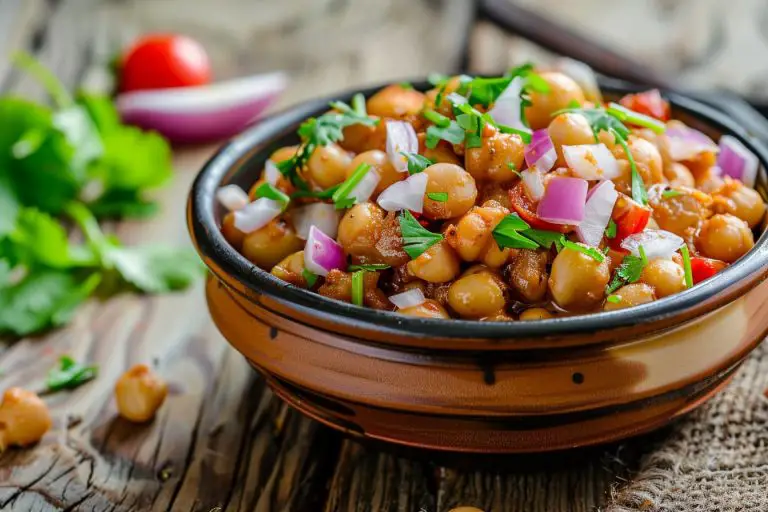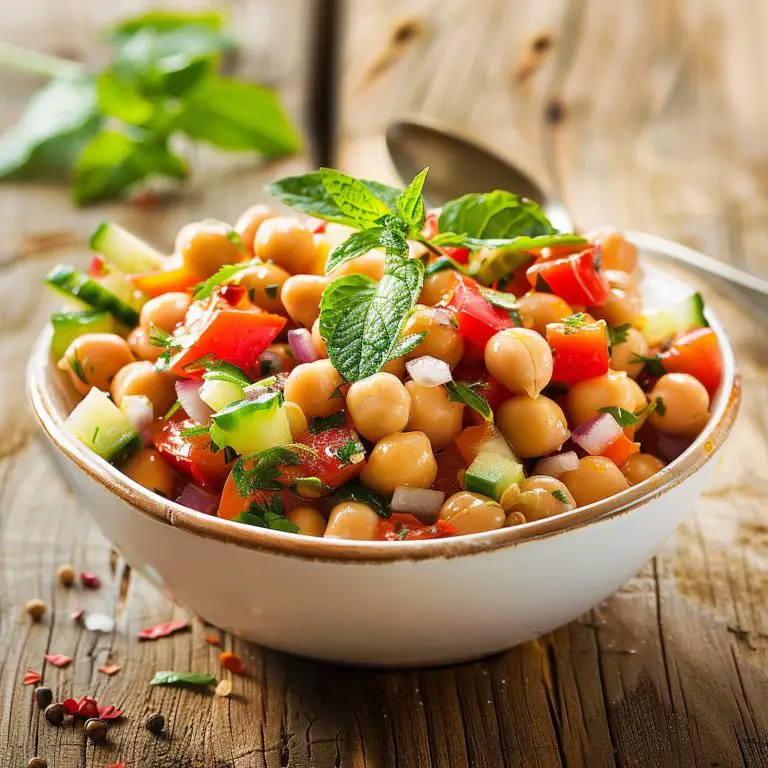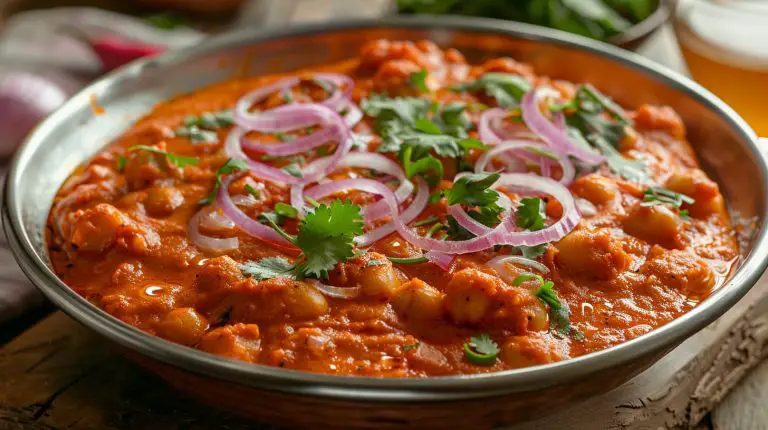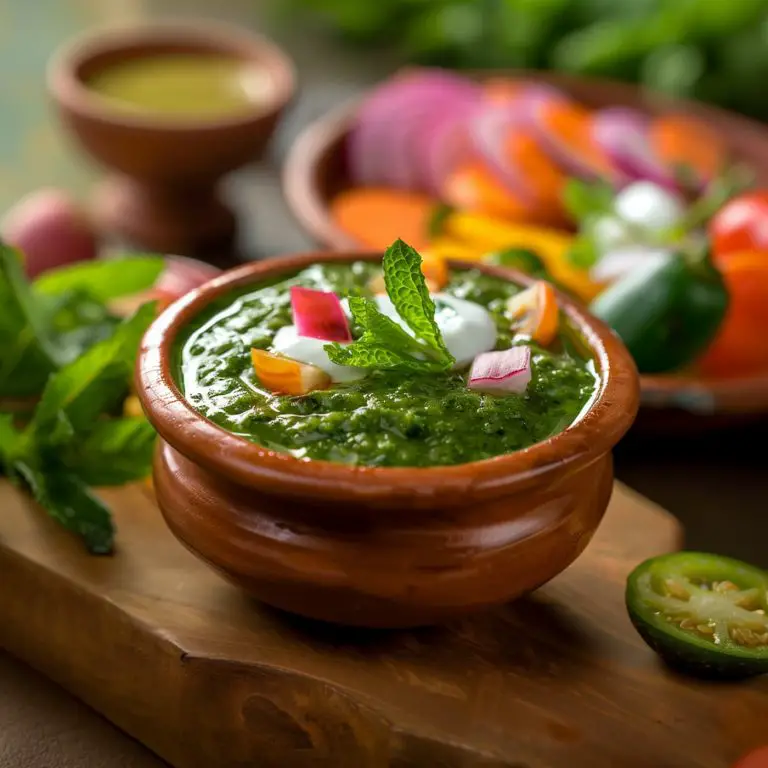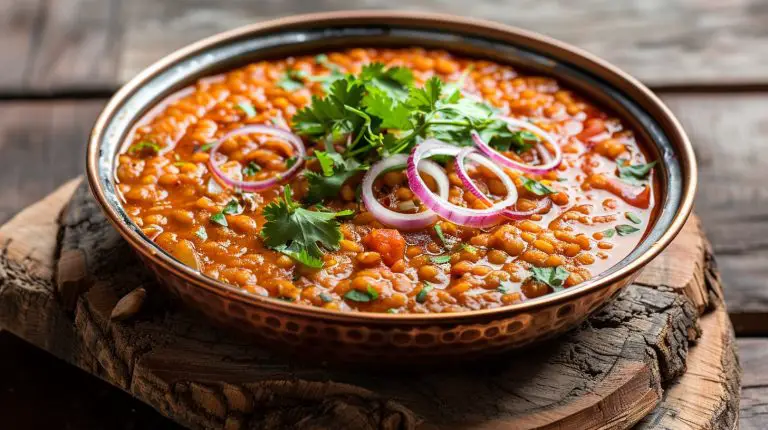Prepare Delicious Tamarind Chutney in 20 Minutes
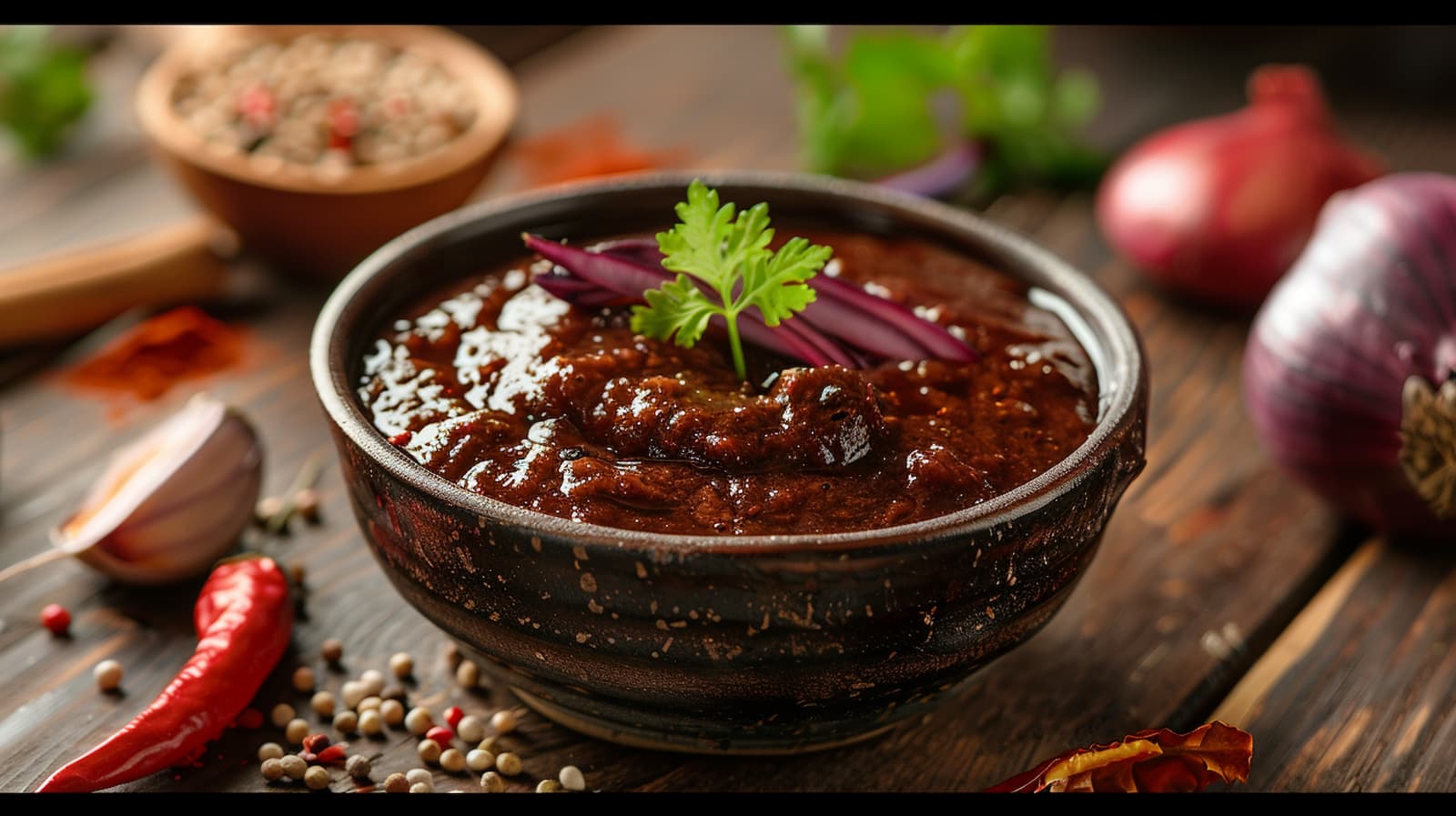
Tamarind Chutney is a celebrated Indian cuisine recipe, cherished worldwide for its tangy-sweet flavor and versatility.
In just about 20-30 minutes, with simple, wholesome ingredients, you can create an authentic Indian culinary masterpiece in your kitchen.
In this guide, you’ll learn
- Some Interesting Facts and Origin Story of Tamarind Chutney
- How to make mouth-watering Tamarind Chutney in your kitchen
- Healthy Vegan Alternatives For The Items Used In the Recipe
- Common Mistakes To Avoid, Pro Tips To Enhance The Taste Of the Dish
- FAQs (Reader Questions Answered) and much more stuff!
So, grab your apron, and let’s dive in!
Some Interesting Facts About Tamarind Chutney
- Tamarind Chutney, known as “Imli Chutney” in Hindi, traces its origins back to the Indian subcontinent.
- Tamarind itself has been used in Indian cooking for centuries, due to the tamarind tree’s widespread availability in tropical regions of Asia, including India. This chutney likely evolved as a way to add flavor and tanginess to meals, leveraging the tamarind’s natural sourness.
Tamarind Chutney holds significant importance in Indian regional traditions, festivals, and daily life. It’s a staple condiment in Indian cuisine, served with snacks like samosas and pakoras, and is an essential component of street food dishes such as chaat.
While the base ingredients of tamarind, sugar, and spices remain consistent, regional variations exist across the Indian subcontinent.
- In some areas, dates or jaggery are added to enhance sweetness, while others might include ginger or black salt for a distinctive flavor profile.
- The consistency and spice level may also vary, from thick and pasty to thin and tangy, depending on regional preferences.
- Tamarind is not only prized for its culinary uses but also for its medicinal properties, including aiding digestion.
- Tamarind Chutney can be made in large batches and preserved, lasting several weeks in the refrigerator, making it a convenient and flavorful addition to meals at any time.
How to Make the Perfect Tamarind Chutney
Ingredients:
- 1 cup tamarind pulp (from soaking dried tamarind in warm water)
- 2 tablespoons jaggery (or coconut sugar as a substitute for a healthier, low-glycemic option)
- 1 teaspoon ginger powder (for digestion)
- 1 teaspoon cumin seeds (roasted and ground, for a smoky flavor and digestive aid)
- 1/2 teaspoon fennel seeds (for a hint of sweetness and aiding digestion)
- 1/4 teaspoon asafoetida (hing) (a powerful spice that aids digestion, substitute with a pinch of gluten-free garlic powder if sensitive)
- 1/2 teaspoon red chili powder (adjust according to taste)
- Salt to taste (pink Himalayan salt for added minerals)
- 2 cups water
- 1 teaspoon oil (preferably coconut or olive oil for a healthier option)
- Fresh coriander leaves (for garnish and an added fresh flavor)
Step-by-Step Instructions:
Preparation of Tamarind Pulp:
-
- Begin by soaking about 150g of dried tamarind in 1 cup of warm water for about 30 minutes.
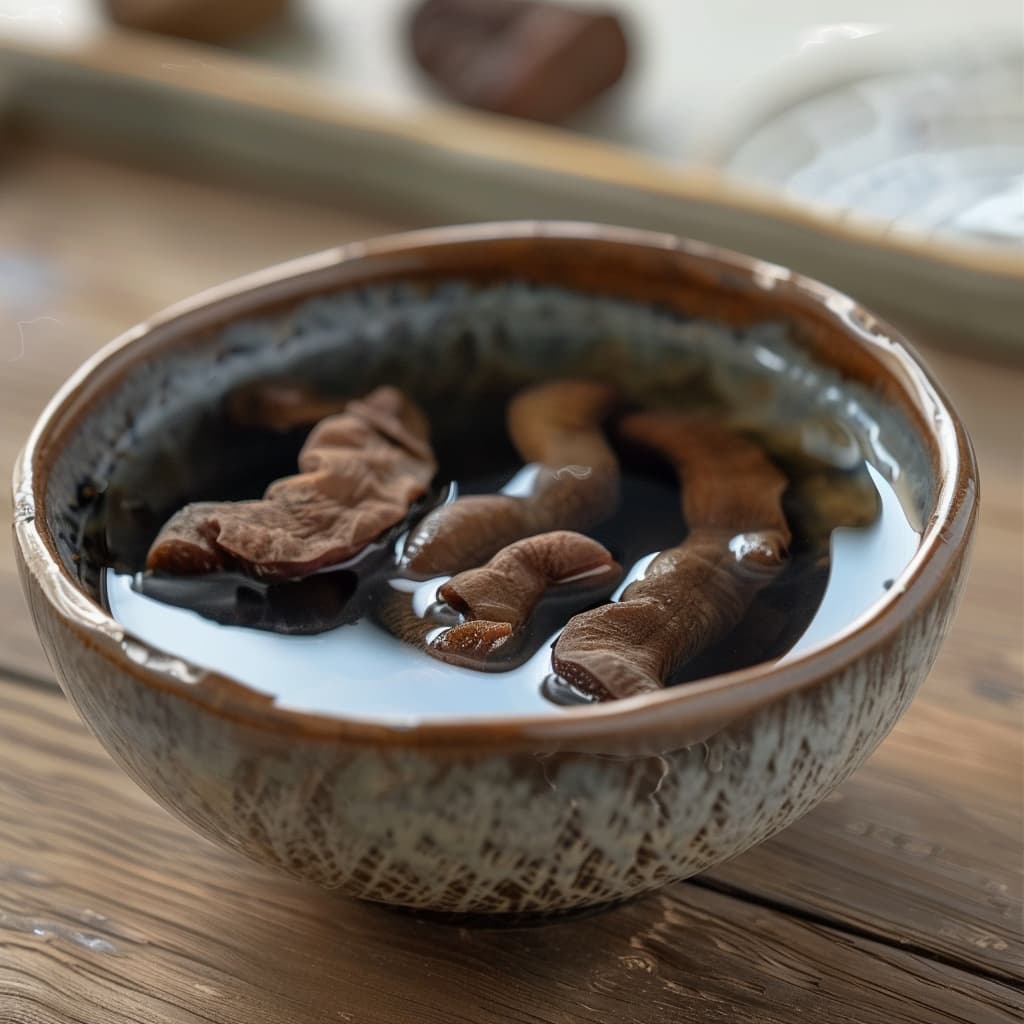
- Once softened, use your hands to mash the tamarind in the water, then strain the mixture to obtain smooth tamarind pulp. This process extracts the essence of tamarind, leaving behind a tangy base for our chutney.
Roasting Spices:
-
- Heat a small pan on low flame, add the cumin and fennel seeds, and dry roast them until they’re aromatic and slightly browned.
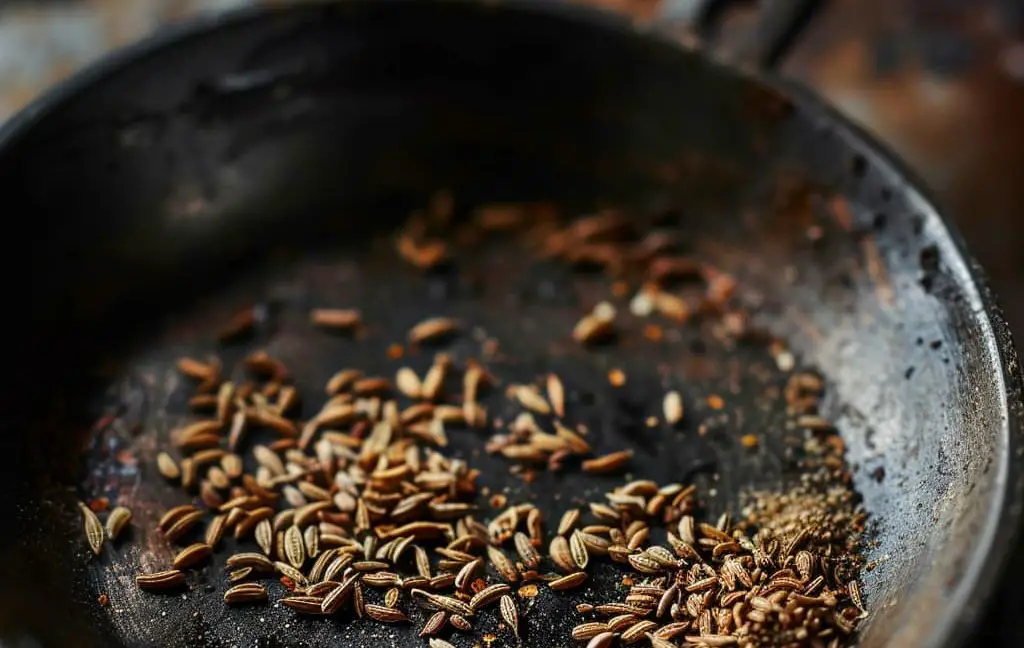
- This not only enhances their flavors but also activates their digestive-aiding properties. Let them cool and then grind them into a fine powder.
Cooking the Chutney:
-
- In a medium-sized pot, heat a teaspoon of oil over medium heat. Add the asafoetida (or garlic powder) and let it sizzle for a few seconds. This step is crucial for infusing the oil with flavor.
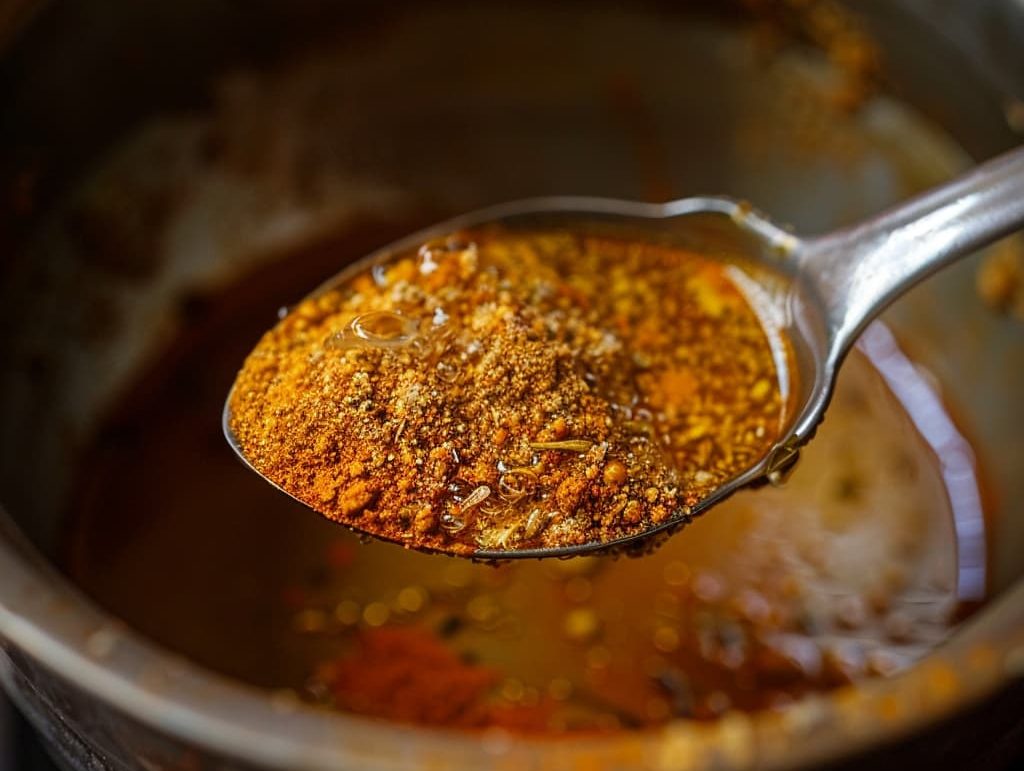
- Add the tamarind pulp, sugar, ginger powder, ground cumin, fennel, red chili powder, and salt. Stir well to combine.
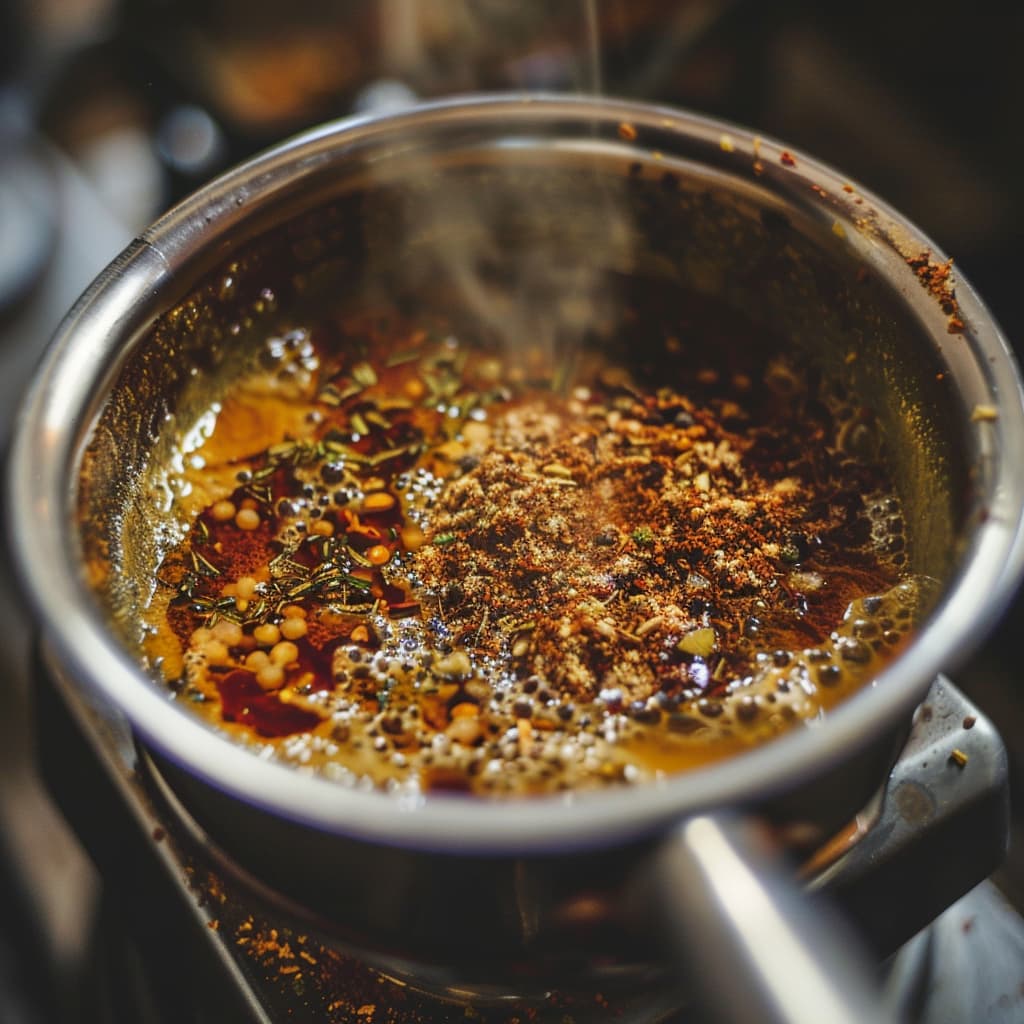
- Pour in 2 cups of water and bring the mixture to a boil. Then, reduce the heat and let it simmer for about 20-25 minutes, or until the chutney thickens to a desired consistency.
- The gradual simmering melds the flavors together beautifully while making the chutney easier to digest.
Finishing Touches:
-
- Once the chutney has thickened, turn off the heat and let it cool. Taste and adjust the seasoning if necessary.
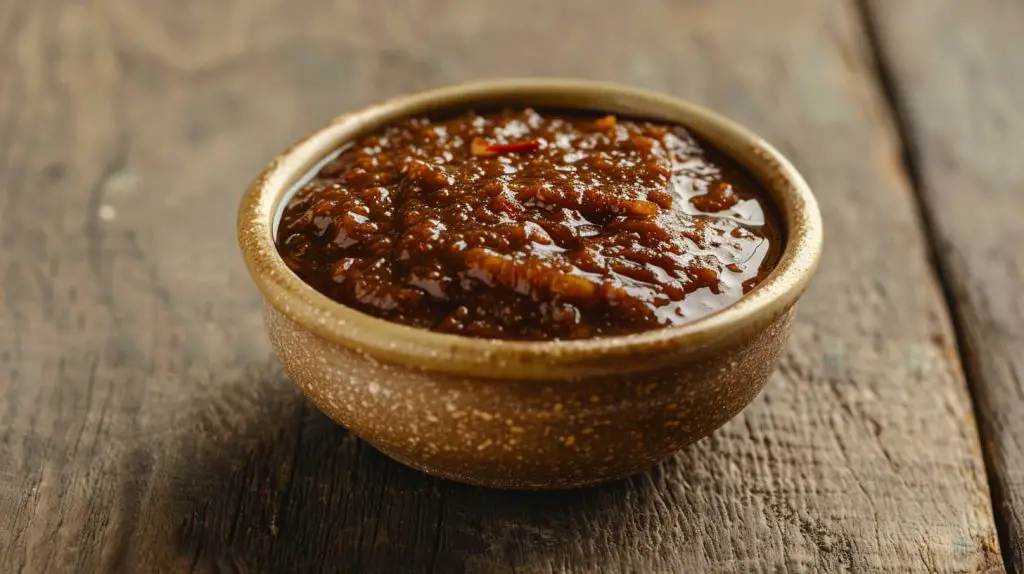
- The balance of tangy, sweet, spicy, and salty should dance on your palate, creating a harmonious blend.
Garnishing:
-
- Chop some fresh coriander leaves finely and sprinkle them over the chutney before serving.
- This not only adds a splash of color but also a burst of freshness to the dish.
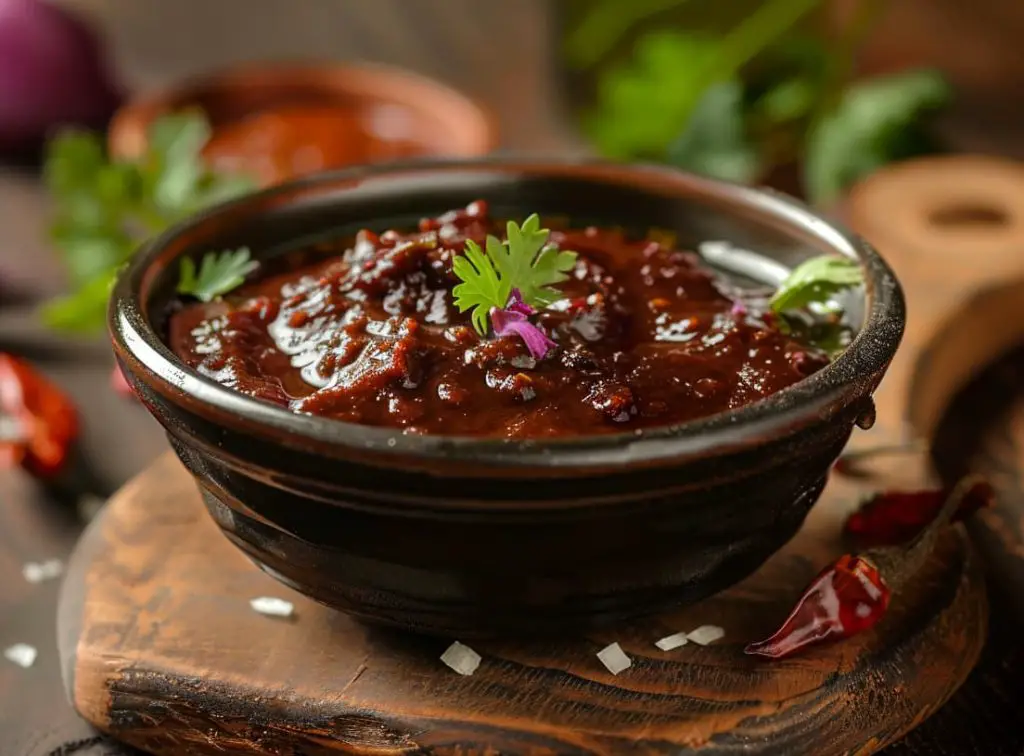
Mistakes To Avoid While Making Tamarind Chutney
- Ingredient Selection
- Mistake: Using stale tamarind or low-quality tamarind paste can result in a lackluster flavor.
- Avoidance: Always opt for fresh tamarind pods or high-quality tamarind paste from a reputable source. Fresh tamarind should feel pliable and have a rich brown color.
- Preparation Pitfalls
- Mistake: Not properly soaking or straining tamarind pulp can leave fibrous material and seeds in your chutney.
- Avoidance: Soak tamarind in warm water for at least 30 minutes, then use your hands or a spoon to mash it into a pulp. Strain through a fine mesh to ensure a smooth consistency.
- Cooking Techniques
- Mistake: Overcooking or undercooking the chutney, which can affect its texture and flavor.
- Avoidance: Cook the chutney on a low to medium heat, stirring frequently to prevent it from sticking to the bottom of the pan. The chutney is done when it thickens to your desired consistency; remember, it will thicken further upon cooling.
- Seasoning and Flavoring
- Mistake: An incorrect balance of sweet, sour, and spicy elements can make the chutney too overpowering in one aspect.
- Avoidance: Start with a moderate amount of sugar (or jaggery), chili, and spices, then adjust according to taste. Remember, the sweetness of sugar or jaggery balances the sourness of tamarind, so add gradually and taste as you go.
- Presentation Tips
- Mistake: Serving the chutney in an unappealing manner, which can detract from its allure.
- Avoidance: Serve the chutney in a small bowl or a decorative dish to enhance its visual appeal. A sprig of fresh coriander or mint on top can add a pop of color and freshness.
Pairing Suggestions for Tamarind Chutney
- With Snacks: Tamarind chutney pairs wonderfully with Indian snacks like samosas, pakoras, and chaats. Its tangy flavor complements the spicy and savory notes of these dishes.
- Main Courses: Use it as a side sauce for grilled or roasted meats, such as chicken, lamb, or fish. It adds a delightful zing that enhances the meat’s flavor.
- Beverages: Pair it with cooling drinks like minty lemonade or mango lassi to balance its tangy taste. These beverages help soothe the palate, especially when enjoying spicy meals.
- Side Dishes: It goes well with simple rice dishes, quinoa, or couscous, adding a burst of flavor to these grains.
Seasonal Variation for Tamarind Chutney
- Spring: Incorporate fresh herbs such as mint or cilantro into the chutney to reflect the freshness of the season. These herbs add a bright flavor that complements the tanginess of the tamarind.
- Summer: Add mango pulp or pieces to the chutney for a sweeter, more tropical flavor. This version pairs exceptionally well with barbecued dishes and summer salads.
- Autumn: Introduce roasted spices like cumin or fennel seeds to the chutney. These warm, earthy flavors are perfect for the cooler weather, adding depth to the chutney that pairs well with hearty autumn dishes.
- Winter: Consider adding dates or dried figs for extra sweetness and texture. These ingredients make the chutney richer and more substantial, ideal for serving with winter meals that often feature robust flavors and ingredients.
Always Keep In Mind that the inclusion of newer veggies or spices can impact the dish’s overall taste, so you may need to adjust your other spices or salt portions to counter that.
Common Problems You May Face While Cooking Tamarind Chutney
Adjusting the Sweetness and Tanginess:
- Problem: Balancing the tangy and sweet flavors can be tricky.
- Solution: Start with less tamarind and sugar, then gradually add more until you achieve the balance you prefer. Remember, it’s easier to add more than to fix a chutney that’s become too tangy or sweet.
Achieving the Right Consistency:
- Problem: Your chutney is either too thick or too thin.
- Solution: If it’s too thick, add a little water until you reach the desired consistency. If it’s too thin, simmer it on low heat to reduce and thicken it. Stir regularly to prevent burning.
Spice Level Adjustments:
- Problem: The chutney is either too spicy or not spicy enough.
- Solution: Add spices gradually, tasting as you go. If it’s too spicy, add more tamarind pulp or a bit of sugar to balance the heat. If it’s not spicy enough, add more chili powder or fresh green chilies according to your taste.
Incorporating Other Ingredients:
- Problem: Unsure about how and when to add ingredients like dates, jaggery, or ginger.
- Solution: Add such ingredients during the cooking process so they can meld together with the tamarind base. Dates or jaggery should be added for sweetness, complementing the tangy flavor of tamarind, while ginger can add a zesty kick. Adjust these additions based on your taste preferences.
Understanding the Role of Spices:
- Problem: You’re not familiar with the spices used or their impact on the chutney.
- Solution: Do a little research or taste test of spices like cumin, coriander, or garam masala before adding them. These spices can dramatically alter the flavor profile of your chutney, so start with small amounts and adjust according to your taste.
Tips for Perfecting Tamarind Chutney
- Quality of Tamarind: Use high-quality, seedless tamarind for a smooth texture and the best flavor. If using tamarind pulp, ensure it’s properly soaked and strained to remove any fibers or seeds.
- Balancing Flavors: Tamarind chutney should have a perfect balance of sweet, tangy, and spicy flavors. Start with less sugar and spices, then gradually add more to taste. Remember, it’s easier to add than to subtract.
- Consistency Matters: The consistency of the chutney can make or break your dish. For dipping sauces, a thinner consistency is preferred, while for spreading, a thicker consistency is desirable. Adjust the amount of water accordingly.
- Roast Your Spices: Lightly roasting spices like cumin seeds before grinding them can enhance the aroma and flavor of your chutney.
- Use Jaggery for Authenticity: Instead of refined sugar, use jaggery (unrefined cane sugar) for a deeper, more authentic flavor profile and a hint of caramel.
- Experiment with Additional Ingredients: Consider adding dates for extra sweetness or ginger for a zesty kick. These ingredients not only add complexity to the flavor but also have health benefits.
FAQs about Tamarind Chutney (Reader Questions Answered)
Q1: What can I use if I don’t have tamarind paste?
- Solution: You can substitute tamarind paste with equal parts lemon juice and brown sugar or use a combination of lime juice and apricot jam for a similar tangy-sweet flavor.
Q2: My chutney is too sour. How can I fix it?
- Solution: If your chutney is too sour, you can balance it by adding a bit more sugar or jaggery. Start with a small amount, stir well, and taste before adding more.
Q3: Can I make tamarind chutney without sugar for a low-calorie version?
- Solution: Yes, for a low-calorie version, you can use a sugar substitute like stevia or erythritol. Keep in mind that the sweetness level may vary, so adjust according to taste.
Q4: The chutney turned out too thick. What can I do?
- Solution: If the chutney is too thick, gently stir in a small amount of warm water until you reach the desired consistency. Add water sparingly to avoid making it too thin.
Q5: Can I add fresh herbs to my tamarind chutney?
- Solution: Absolutely! Fresh herbs like cilantro or mint can add a refreshing flavor to the chutney. Add them towards the end of cooking to preserve their vibrant color and taste.
Q6: Is it possible to make tamarind chutney spicy?
- Solution: Yes, to add heat to your chutney, include finely chopped green chilies or a teaspoon of red chili powder during the cooking process. Adjust the amount based on your spice tolerance.
Q7: Can I use tamarind chutney as a marinade?
- Solution: Tamarind chutney makes an excellent marinade for meats and vegetables due to its tangy and rich flavor. Just ensure the consistency is suitable for coating your ingredients evenly.
Q8: My chutney is too tangy; how can I fix it?
- Solution: Balance the tanginess by adding more sugar or jaggery. If it’s overly thick, dilute it with a little water.
Q9: Can I make tamarind chutney without sugar for dietary reasons?
- Solution: Absolutely. Use natural sweeteners like dates or raisins instead of sugar or jaggery. You might need to adjust the quantity to achieve the desired sweetness.
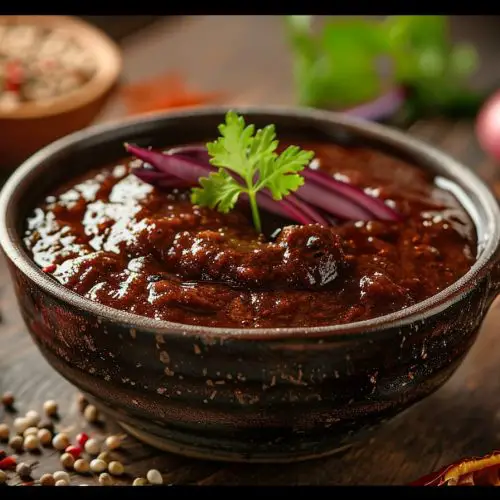
Tamarind Chutney Recipe
Ingredients
- 1 cup tamarind pulp from soaking dried tamarind in warm water
- 2 tablespoons jaggery or coconut sugar as a substitute for a healthier, low-glycemic option
- 1 teaspoon ginger powder for digestion
- 1 teaspoon cumin seeds roasted and ground, for a smoky flavor and digestive aid
- 1/2 teaspoon fennel seeds for a hint of sweetness and aiding digestion
- 1/4 teaspoon asafoetida hing (a powerful spice that aids digestion, substitute with a pinch of gluten-free garlic powder if sensitive)
- 1/2 teaspoon red chili powder adjust according to taste
- Salt to taste pink Himalayan salt for added minerals
- 2 cups water
- 1 teaspoon oil preferably coconut or olive oil for a healthier option
- Fresh coriander leaves for garnish and an added fresh flavor
Instructions
Preparation of Tamarind Pulp:
- Begin by soaking about 150g of dried tamarind in 1 cup of warm water for about 30 minutes.
- Once softened, use your hands to mash the tamarind in the water, then strain the mixture to obtain smooth tamarind pulp. This process extracts the essence of tamarind, leaving behind a tangy base for our chutney.
Roasting Spices:
- Heat a small pan on low flame, add the cumin and fennel seeds, and dry roast them until they're aromatic and slightly browned.
- This not only enhances their flavors but also activates their digestive-aiding properties. Let them cool and then grind them into a fine powder.
Cooking the Chutney:
- In a medium-sized pot, heat a teaspoon of oil over medium heat. Add the asafoetida (or garlic powder) and let it sizzle for a few seconds. This step is crucial for infusing the oil with flavor.
- Add the tamarind pulp, sugar, ginger powder, ground cumin, fennel, red chili powder, and salt. Stir well to combine.
- Pour in 2 cups of water and bring the mixture to a boil. Then, reduce the heat and let it simmer for about 20-25 minutes, or until the chutney thickens to a desired consistency.
- The gradual simmering melds the flavors together beautifully while making the chutney easier to digest.
Finishing Touches:
- Once the chutney has thickened, turn off the heat and let it cool. Taste and adjust the seasoning if necessary.
- The balance of tangy, sweet, spicy, and salty should dance on your palate, creating a harmonious blend.
Garnishing:
- Chop some fresh coriander leaves finely and sprinkle them over the chutney before serving.
- This not only adds a splash of color but also a burst of freshness to the dish.
That is it…If you have any queries let me know in the comments.

